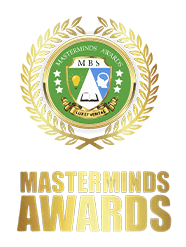Kaizen Culture in the Workplace

Kaizen is a system which requires interaction and participation from all employees, from the front line crew to the upper management and even CEO of the company. Everyone is encouraged to brainstorm and come up with suggestions for improvement on a regular basis. It is a continuous activity, carried out throughout the year. Employees from all levels of a company work together proactively to achieve continuous, small and incremental improvements to the business processes. In this way, different levels of experiences and skills can be brought together to create very powerful techniques for making improvements in the company’s processes. Kaizen is a process, which if performed correctly, humanizes the workplace, eliminates hard work while encouraging smart work, and motivates people to conduct experiments based on their suggestions, learn to identify and reduce wastes in the business processes. When Kaizen is implemented as an action plan through a series of Kaizen events, it teaches employees to think in different ways about their work. They are pushed to think how their current work can be further improved in order to achieve greater success. Implementing Kaizen in workplace There are three stages in implementation of Kaizen in any organization. 1. Encourage participation – To ensure active participation from all employees, it is necessary that first awareness about Kaizen is created. After the necessary awareness training sessions are provided, conduct and promote Kaizen events and provide rewards to employees on successful implementations of ideas which are the results of these events. In such events, direct involvement of management is also important. 2. Training and Education – A proper training is required for executives to learn the essence of Kaizen. The management level should thoroughly understand Kaizen in an organizational vision context, which needs to be followed vigorously to achieve the desired business results. They must also be taught how to be impartial towards everyone and encourage their employees to actively participate. 3. Quality level improvement – After training is completed, people should remain focused on making changes towards improvement. They should take measures to start making small and incremental changes towards achieving long term goals, like improving efficiency, processes and quality. In organizations where Kaizen is being implemented, transparency between different levels of the organization is very crucial. Effective communication should take place between all the levels of employees. While employees are brainstorming for ideas, it is important that management also gets involved in these sessions. The manager also should ensure that their suggestions and ideas are being acted upon immediately and not delayed by a week or month. Employees should be kept informed about other activities going on in the team and how their ideas are being worked upon. People should not feel that their ideas have all gone waste and are not being used. A positive mind set is what will help in keeping Kaizen alive in the organization. Thus, constant application of Kaizen creates huge long term value by developing the culture that is really needed for true continuous improvement.
Team Building: Developing A Team To Rely On

Team building is very important when it comes to managing people. People are simply more willing to work together, when the atmosphere encourages it. For many organizations this is quite necessary for the business to run well. When everyone gets along, things just go better. They provide better service to the customer. They work together to deliver satisfaction with smiles. They also help to promote employee retention. Customers are happy, employees are happy, and the world is now a better place, right? Team building is anything but simple. It is not something that can be done overnight. Nor is it something you can force people to do. So, how can you effectively build your team to encourage them to bond and develop working relationships that are positive? There are many things that you can do. Here are some ideas: Set the example yourself. As the leader of the team, it is up to you to provide a good relationship with your team players. You want them to feel comfortable with you as well as with others. Don’t favor some and don’t become too friendly either. You can encourage relationships to work by fostering a teamwork style. Make sure that the goals are established and that each team player is aware of them. They should know that you want a team work environment that is what you are looking for in your employees. Also, provide them with opportunities to get to know each other. Take the team out to dinner on you. Encourage them to talk about their families and lives so that they can bond. When team building is successful, there are many things that can happen. Not only will the business run better, but you can foster good qualities in individuals to come out. You can have a bond of trust and reliance with your team. Team building is an exceptional quality that you should encourage in some form or another with your team.
Speaking Well In Public Is By No Means Accidental

You might possibly know how jokes can complement your speech. But jokes can also cause your speech to be disastrous. Jokes are both a boon and bane to a speech. If you are very much in comfort with it, use humor. Just check it first if it fits, serving as a breaker between sections or emphasizing a certain point. A funny and great line, or a comment that is irreverent can help liven up the presentation that you have and will help people to remember the things you have said. Of course any joke must be related to the topic that you have in some way. If you are not sure about something, you could also use a humorous photo or cartoon (with the permission of the photographer or illustrator, of course) in your slides. Aside from making jokes or humor in your speech, you could improve your public speaking with these other tips. – You should be able to grab your listeners’ attention even right at the start. That is why it is important that you start correct – confident posture, eloquent speaking style, controlled voice tonality and impact, and a nice, well-thought speech from you. – The information in your message should be organized clearly and logically, making it easy for your listeners to follow what you are trying to say. Keep things easy and simple. Divide the information into smaller blocks and work from there. Highlight the points that you want your audience to remember. – Your most crucial point should be the conclusion, bringing the speech to a close. The conclusion sets the tone of the speech, and lets the listeners think about and ponder on the things you have just said. Literary devices, such as quotes, stories, rhetorical questions, or surprising facts, can be used for concluding a speech, although of course, these devices should relate well to the topic of your speech. – Deliver the conclusion that you have clearly and slowly. Keep eye contact with your listeners as you speak. Smile at them, thanking them for the time that they have given you. – You should remember all these tips and in due time, you would be surprised to see how these techniques have helped you in your future speaking presentations. Your listeners will eventually understand the information you have given them and respect you for your ability in delivering that information.
Simple Leadership Basics

A great cloud of jargon, debate, and junk theory surrounds the idea of leadership, what it is, who does it, and how to do it well. But if you have just been promoted, and you’re responsible for a group for the first time, there are only a few things you really need to know about leadership. When you get promoted and become responsible for the performance of a group you become a leader. But you don’t undergo some magical change. In fact, it will probably take you over a year to completely adjust to your new role. You’re a leader because the people in your group treat you like one. The only choice you have is what kind of job you’ll do. When you become a leader your power actually goes down. As an individual contributor, you just have to decide to work harder, longer or smarter to improve performance. When you’re responsible for the performance of a group, the group is your destiny. They choose whether to act or not. When you become a leader, your influence goes up. The people who work for you pay attention to what you say and do. They adjust their behavior accordingly. The result is that you use your behavior (what you say and do) to influence the behavior of the people who work for you to achieve a defined objective. Achieving the objective is part of your job as a leader. The other part is caring for your people. It may be possible to achieve good short term results without caring for your people. But you can’t achieve long term success for you or your company without the willing cooperation of the best folks you can find. At the end of the day, you can measure your leadership based on those two standards. Did we accomplish the mission? Are the members of my group better off today than yesterday?
Introduction of Kaizen Advantage

To be happy, to make others around them happy, to live life to it’s fullest. These are the top three reasons we seek to continually improve in life. Without happiness, smiling faces around us and living life to the fullest, what type of life would we live? Today, I would like to introduce you to a little something called kaizen – many of you may have heard of this before, but to some, this may be a foreign word. Simply put, it is a Japanese management strategy that can be incorporated into all areas of your life, from work situations to personal life issues and the management thereof. Roughly translated, it means; “Continuous slow improvement, or good change.”Kaizen, is the philosophy of using small steps, or contributions, that work towards a big change, or ‘big picture’. It focuses on you and me, the individuals that form part of a small business, corporation and even a country. It encompasses the little things that can be changed by each one of us, on the path to becoming better, healthier, fitter Human Beings. This is achieved by concentrating and improving on the little things that with time, effort and consistency, add up to a way of life, creating success almost effortlessly. To get to this point, we have to conquer our bad eating habits, cogitating, lack of activity and stress. We have to take small, but steady steps towards achieving our goals, no matter what they might be! We can use the power and effectiveness of Kaizen, to accomplish all of this. Kaizen is a long term commitment. It takes a long term view and the most important principles are that it is a daily, continuous and steady exercise. It is not important that huge and sudden improvements are made. Small improvements are great and it is important that you continually look at ways of making things better, no matter how small. You know the saying, “if it works, why change it?” Well, the Kaizen philosophy suggests that there are always ways to improve things, no matter how small that these changes may be. We all know that it is better to prevent a problem than to fix one. By incorporating the Kaizen principles into your life, any obstacle to your success can be removed, even if it is one step at a time. Just remember, a thousand mile walk begins with the first step. How to start? You have to start with your mind. What motivates you? What is your reason for wanting to do whatever it is you want to do, be it weight loss, planning a trip, or improving your financial well-being? How will reaching those goals make you feel and how it might change your life? We have to learn to be patient. This can only be measured by your commitment to your goals. You are committing to changes to improve your life and this will not change over- night. As they say, Rome was not built in a day! When you have embraced the Kaizen philosophy, you will not be put off by setbacks, but will enhance your vision with objectives based on time lines and measuring your success on a daily basis, by sticking to your commitment. Well now it’s time to take a closer look into this subject of Kaizen, through this short journey we are going to uncover exactly what kaizen is, the history behind it, the different types of Kaizen, how to create a Kaizen environment in your home, and much more.
Leadership: Management and Leadership

Although some people treat the terms management and leadership as synonyms, the two should be distinguished. As a matter of fact, there can be leaders of completely unorganized groups. On the other hand, there can be managers, as conceived here, only where organized structures create roles. Separating leadership from management has important analytical advantages. It permits leadership to be singled out for study without the encumbrance of qualifications relating to the more general issues of management. To clarify, leadership is certainly an important aspect of managing. The ability to lead effectively is one of the keys to being an effective manager; also, undertaking the other essentials of managing — doing the entire managerial job — has an important bearing on ensuring that a manager will be an effective leader. Managers must exercise all the functions of their role in order to combine human and material resources to achieve objectives. The key to doing this is the existence of a clear role and a degree of discretion or authority to support the manager’s actions. The essence of leadership is followership. In other words, it is the willingness of other people to follow that makes a person a leader. Moreover, people tend to follow those whom they see as providing a means of achieving their own desires, wants and needs. Leadership and motivation are closely interconnected. By understanding motivation, one can appreciate better what people want and why they act as they do. Also, leaders may not only respond to subordinates’ motivations but also arouse or dampen them by means of the organizational climate they develop. Both these factors are as important to leadership as they are to management. Leadership can be defined as influence, that is, the art of influencing people so that they will strive willingly and enthusiastically toward the achievement of group goals. Ideally, people should be encouraged to develop not only a willingness to work but also a willingness to work with zeal and confidence.
How To Unleash All Your Leadership Potential

There is a steady flow of information in the form of books, articles, white papers and training all in the context of “what is leadership” or “how to develop a leader” ?. In this issue, I will avoid those two questions and write about two others that I believe might be on the minds of a lot you readers and they are: Why does better leadership make a difference? and how does better leadership achieve those differences? Leadership is a highly unique form of human behavior that requires the integration of character, knowledge and experience. So what can you do if you step up and unleash your leadership potential? Change the world. Your journey to unleashing your leadership potential begins with a great understanding of self. Discover your personality traits and how they relate to leadership. When we know ourselves, we can maximize our positive traits, and become aware of our weaker areas, which help us to achieve our leadership potential. Once you understand and know yourself, next you must hone your communication skills. These are not limited to your public speaking skills either. This includes your writing style and your body language. Your ability to communicate effectively enhances your ability to improve interpersonal relationships. Another important skill is to learn how to learn. Examine different teaching methods and learning styles to identify how you and those you may lead learn best. This skill will greatly enhance your ability to make decisions and give clear instructions. An Exceptional Leader is one that recognizes the value of harnessing the skills and abilities of team members and leads them toward greater efficiency and effectiveness….And so leader is not a title and leadership is not something you are born into. Leadership is something you develop. This is what Dr. Ken Blanchard, in his book “The Heart of A Leader” had to say about good leaders; “If you want to know why your people are not performing well, step up to the mirror and take a peek.”
How to Make the Most of a Failed Business Strategy

In the world of entrepreneurship there are times when your strategy is going to fail. Obviously, your goal is to minimize this is much as possible and work as hard as you can to make a strategy work so that it doesn’t fail. But sometimes, there is nothing you can do to avoid it and you must cut your losses and move on. But before you go on to the next opportunity, you should know how to make the most of a failed strategy and learn from it so you’ll be better in the future. Find out Why It Didn’t Work Your first task is to find out why the strategy didn’t work. This might be difficult but it will be vital to not making the same mistake in the future. If you just shrug your shoulders and move on, you could make the same mistakes in the future that cause the strategy to fail. But if you know what mistakes you made, how to fix them or avoid them in the future, you’ll have a big head start towards connect opportunity. Keep in mind, it is usually a combination of several factors that make a strategy fail and not just one single problem. Don’t Let Discouragement and Negativity Keep You from Moving Forward Just because a business strategy failed doesn’t mean that you, personally, are a failure. In fact, the very fact that you failed shows that you’re willing to take a risk and put yourself out there. Most successful people fail several times before they get it right. If they had stopped after one or two failures they would’ve never gotten to the point they are today. A good example of this is novelist Stephen King. He had hundreds of rejection slips posted on his wall before finally getting published and now he’s the most successful novelist of the 20th century. Find out What Did Work Finally, you’re going to break down the strategy as you’re looking for reasons that it failed and find out what things did work. You can use those same things in the future when you’re ready to begin a new strategy. Knowing what worked and what didn’t can be a powerful asset in your next endeavor and understanding what actually did work can teach you just as much is figuring out what didn’t work about a strategy.
How To Overcome Nervousness When You Speak In Public

Even if the speech you have is already prepared and you know everything about it, public speaking can be difficult. Many people are very nervous when they speak in public. Here are some tips for you to overcome your nervous feelings when you speak in front of many people. Preparing your presentation Center on yourself. Try practicing standing properly – with your feet under the hips directly. This position is the best and most stable for speaking in public. Rehearse this position with somebody or in front of your mirror. Your shoulders should be relaxed. The muscles in the shoulders support directly your larynx, so it has a fast effect on your voice. Shoulders should be rolled out. Warming up the voice. You should treat all your presentations as if they were performances. Prepare yourself by rehearsing. Deeply breathe into the bottom part of the lungs. You feel your rib cage is expanding slightly higher than the navel. You should thrice sigh. Sighing is your signal to the body that everything is okay and it is just perfect to relax. Then make a siren sound, starting from a high note to a lower note at the bottom part of the voice range you have. With enough practice, you will be able to find the low note connecting to the place located right above the navel. This is the natural voice pitch that you have. Managing meeting skills Directing your voice. Every time you speak, imagine that each word you say is like a beam of laser traveling from your mouth to the end person listening to you. Practice this outlook to be able to reach to many people at the same time. Directing your thoughts. Pay attention to your thoughts, especially their beginnings and endings. Make your communication complete and fully rounded. Diction as well as articulation. Convey clearly your message. During questions Give yourself time and space in breathing. Before answering, slightly breathe out first. When you are flustered or nervous, you usually take in more additional air than you need, and you hold onto that air while you try to think. However, this is not helping you. Usually, this method causes you to panic. Remove this habit by breathing air first before you speak, allowing you to relax and thoughts to come in clearly and more logically.
How Clarity is a Powerful Way to Get Your Goal

So, you are ready to make some goals. In order to discuss goals are going to use the analogy of a vacation that you are traveling to by car (picturing the station wagon from National Lampoon’s Christmas Vacation is perfectly acceptable). The goals that you set are like the ultimate destination, the place that you’re going. The vehicle that you’re going to use to get there are the short-term goals that you’ll be achieving along the way but without an ultimate destination, a very specific ultimate destination, you aren’t going to get anywhere. That’s like trying to drive to Florida on your vacation and saying that it is somewhere “over there” east of you. What Are Specific Goals? What exactly are specific goals? Let’s take one of the goals that you probably have, because everyone trying to achieve success as an entrepreneur has this goal; to make more money. You can’t just use the goal of making more money, becoming rich or financial independence either, because those things mean nothing specifically. How are you going to know when you get there? How will you know if you’re on the path to get there? Unless you make your goals specific you’ll have no direction; no specific place on the map that you can arrive at and know that you’re in the right place. So, let’s take our example of wanting to make money. Instead of having a goal that is this general, try creating a goal with something like: increase income by $10,000 per year by the end of the year, or by month 12 if you happen to be in the middle of the year. So, you’ll know if you’ve actually achieved that goal, because you can look in your bank account, or at your financial information, and see that you earned an extra $10,000 in the past 12 months. Also, when you get to month six you’ll be able to look and see just how on track you are. If you are around halfway there, you know that you’re on track. If you haven’t made anything, you really need to step up during the next six months. Aim High, like the Air Force Do you know what you’re capable of? You might think you do, but for most people what they can actually achieve is quite different than what they think they can achieve. You have probably heard the axiom: whether you think you can or you can’t, you’re right. People have set world records in athletic events, and experts have deemed some of them the fastest or best the human body is capable of, and then someone from a remote part of the world didn’t get the memo that there was a limit as to what the human body was capable of until after they’d already broken the record. Set your goals higher than you think you can achieve. Of course, don’t set them outrageously high to the point where they’re unrealistic, but set them higher than you think you’re probably capable of. For example, our previous goal of earning an extra $10,000 in 12 months is pretty reasonable and probably achievable depending on what you do to make it happen. If your goal is to make $100,000 over the next 12 months, that’s pretty unrealistic. But what if your goal was to make an extra $15,000 in 12 months? You might think that you’re only capable of making an extra $10,000 but by setting the go higher you have something to aim for, and suppose you only make $12,000; that’s still $2000 more than your original goal. Putting Goals into Action You want to make a list of around five goals to start with. The number is not important; it is arbitrary. What is important is that you create enough goals that will allow you to accomplish something substantial in the next 12 months, or five years, or whatever your time frame is, and not so many goals that you have no chance of achieving them all. Then, for each goal, you’re going to make a plan of action. Earlier we used the analogy of driving a car to a vacation destination. Your plan of action is that car; it is the vehicle that is going to take you all the way to the end where your success waits. Your plan of action is going to take you from where you are now all the way to the end result, which is your goal. It is going to include milestones, or places that you stop along the way to check your progress as well as specific small goals that you’ll need to achieve to get to the big goal. It is sort of like playing a video game – you have to beat all of the easy monsters before you get to the big boss at the end of the level. If your goal is to make an extra $10,000 in the next 12 months then you need to know what specific things you need to do to make that happen. Are you planning to start an online store? Are you making investments? Whatever your method is, you’ll have specific things that you need to accomplish, and that makes up the framework for your plan of action. What If You Don’t Know How to Get There? Sure, you might be saying, this is all well and good, but what you do if you don’t know how to get to your destination – or achieve your ultimate goal. There are several ways that you can figure it out. You can do research online, you could write to some of the people that you admire and that you know of had success and asked them how they were able to achieve their goals. You can read a few books or get advice from family or friends. There are many things that you can do to learn how to get from point A to point B.


